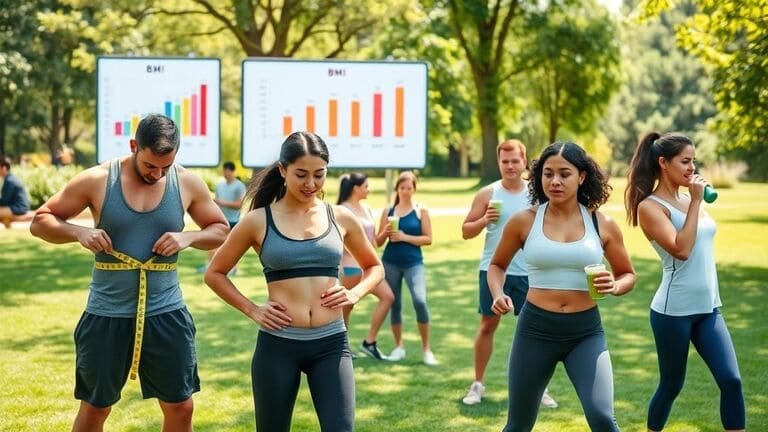
The change to wearable analytics and metabolic assessments in 2025 creates another framework from the static BMI calculation into a dynamic basis for personalized wellness recommendations. This analysis reviews both evidence-based calculations and trending modalities (like hybrid integrated interval sessions) to create pragmatic approaches.
The Role of BMI in Today's Wellness World
BMI estimates body fat based on height-weight ratios and current guidelines list BMI categories among the following: underweight (below18.5), healthy weight (18.5-24.9), overweight (25-29.9), and obese (30+). Overall categorization remains the same for the CDC, with modified charts for demographic differences as applicable. Its current importance relates to sedentary behavior patterns and the emergence of sustainable formats in the fitness world. BMI serves. Above all, it's a subjective indicator and not a definitive measure, which matters in regard to potential comparison among individuals with higher density of muscle mass.
Getting the Math Right
Use the basic formula for accuracy. Using metric units: divide kilograms by meters squared. In imperial units: multiply pounds by 703, and then divide by inches squared. A 165 pound person who is 5'6'' (66 inches tall) = (165 x 703) / (66 x 66) = 26.6 and is considered overweight. Many recommended sources, including sources like Harvard Health, complete these calculations and also provide age-based percentiles. Perform recording of measurements in the morning after fasting, using the restroom for consistency. The waist measurements should also be included - if the waist is greater than 40 inches for men, and 35 inches for women, this is concerning for abdominal or visceral fat.

Connecting the Dots to Proof Goals
Device metrics into specific goals related to the 2025 targets of functional strength and recovering well. If a person is in the overweight category, then focus on resistance training standards at least twice a week aligned with increased hypertrophy for muscle size. Healthy categories will see improvements of the amount of oxygen (VO2) through interval and pace changes. Furthermore, gamified applications have been seen to have a 35% increase in compliance over clinical trails. In contrast, underweight categories will respond positively to guided food programs to help for more structured increase.
Your Pathway to Numbers and Next Steps
This sequential process - based on validated approaches - yields average decreases of 12 pounds over 10 weeks in controlled scenarios.
- Get precise readings: Use digital scales for weekly visits in the morning. Tracking longer patterns can be important to lessen the effects of hydration changes.
- Count the BMI: Follow the formula, or use something like our free BMI calculator for instant results and goal suggestions built right in.
- Look at larger: Add body composition at the same time via calipers, or bioimpedance devices. Look for aberrations that might warrant medical management, for example, hormonal indicators.
- Establish intent-based goals: Goals for overweight populations might be one pound a week through progressive overload. Healthy populations might see metabolic changes by increasing intensity with less time in high-impact bursts. Both groups might use connected applications to precalculate algorithms based on data input.
- Add time off: Select methods like myofascial release, or thermal modalities, alongside adaptive, time-based fitness principles for non-exercise days to support the process. Review BMI every 3-6mos to assess you are making progress for changing physiological-or environmental changes.
The system will support a long-term process for change based on personal context.
Enhancing Multifaceted Workouts
Introduce virtual coaching platforms aimed at biomechanical feedback, where BMI tracking also overlaps with performance visualizations, to share fitness with different demographics in both performance and to some extent with the health and wellness world. Adaptive programming creates new demographic guidelines, just as new plant-based nutrition options and sustainable equipment has also surfaced. Healthcare professionals will also provide pertinent recommendations in regard to potential medication or glandular interactions, but are still within a meaningful practice.
Overcome obstacles such as metric focus that can take a person off-track in the whole-person focus. Avoid blanket recommendations, which is vital for equitable progress across sexes or individuals sharing similar traits. Be evidence or efficacy based in your nutrition suggestions and caution enhancements with no evidenced effects.
Wellness is better attained by recurring lesser efforts than with occasional bouts of maximum effort. Use BMI forecasting to gain some perspective on the goal process. True long-term harmony or vitality often follows.